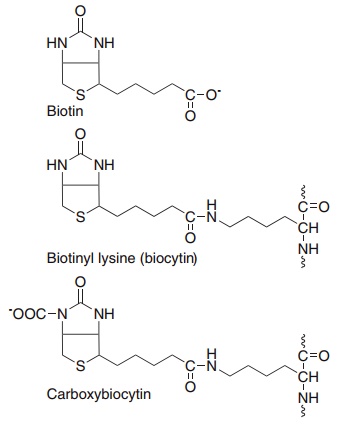Chapter: Introduction to Human Nutrition: The Vitamins
Metabolic functions of biotin
Metabolic functions of biotin
Biotin functions to transfer carbon dioxide in a small number of carboxylation reactions. The reactive intermediate is 1-N-carboxy-biocytin (Figure 8.17), formed from bicarbonate in an ATP-dependent reac-tion. A single enzyme acts on the apoenzymes of acetyl-CoA carboxylase, pyruvate carboxylase, propi- onyl-CoA carboxylase, and methylcrotonyl-CoA carboxylase to form the active holoenzymes from (inactive) apoenzymes and free biotin.

Figure 8.17 Biotin, biotinyl-lysine (biocytin) and the role of biocytin as a carbon dioxide carrier.
Biotin also has a role in the control of the cell cycle, and acts via cell surface receptors to regulate the expression of key enzymes involved in glucose metab-olism. In response to mitogenic stimuli there is a con-siderable increase in the tissue uptake of biotin, much of which is used to biotinylate histones and other nuclear proteins.
Related Topics